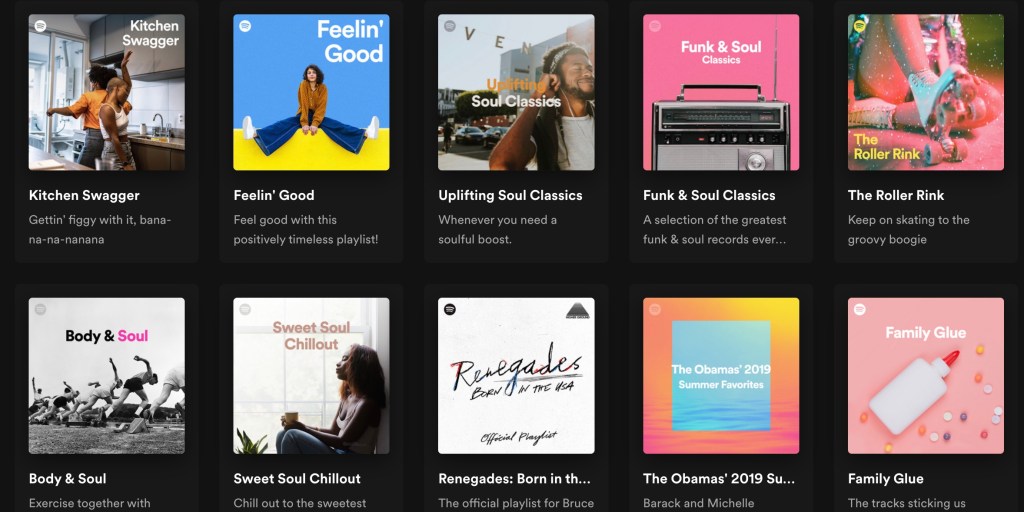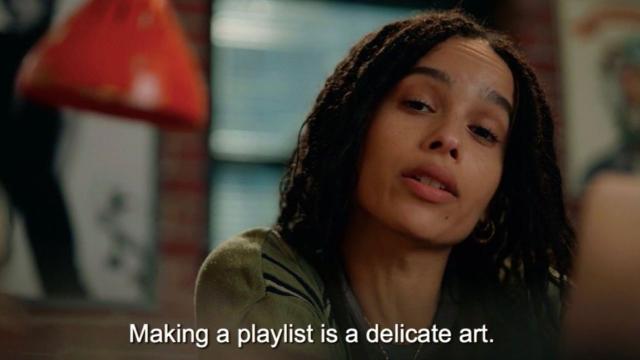When you dip into your favourite Spotify playlists, do you ever stop to think about who might have made that compilation of tunes that hits at your emotions just the right way? And no, we’re not talking about the lists you make for yourself. Nor are we referring to playlists made by other Spotify users, or even those crafted by the platform’s (really quite clever) algorithm. No, we’re talking about the human people who are employed as Spotify editors and tasked with the job of deciding which tracks should make their way into your headphones each day.
Each editor working at Spotify Australia is a genre specialist who works within a global pool of editors. The Aussie team manages some 160 playlists that are tailored to local audiences, with the intention of platforming local artists to listeners. Lifehacker Australia had the pleasure of speaking with Hannah Brewer, who works as a Spotify editor for both Australia and New Zealand.
Here’s a peek at a day in the life of a Spotify editor, plus some tips on crafting the perfect playlist.
A day in the life of a Spotify editor

Brewer explained over Zoom that she “looks after Country and Pop” music, and highlighted that her “focus is connecting artists from those genres with audiences”.
When it comes to an average day, she shared that, unsurprisingly, she’s “listening to a lot of music and then trying to find homes for them on [the] platform, essentially”. And when she says a lot of music, she means it. Brewer shared that, on average, we’re talking about 20 hours of plug-in time per week, listening to tunes.
A huge part of the job, however, is finding epic new local music.
“So, anyone can pitch new music through Spotify for artists,” Brewer shared.
“…Those tracks are then available to every curator globally. So, [on an average day] I’m going through all of the music from Australia and New Zealand and trying to sort that, and then I spend a lot of time on-platform as well, looking at music that’s already released and looking at how audiences are engaging with those tracks to see whether we’re serving them enough – if there’s organic demand for it.”
Groove is in the heart

When it comes to music, personal preference plays a huge part in what we recommend to others. We were interested to understand how Spotify editors balance their own tastes with considering the wants of audiences on the platform.
Brewer explained that while “bias will always be underlying for all of us,” the job of a music editor with Spotify runs deeper than that.
“…when I listen to music, I listen through the context of, ‘Will this song connect with an audience? And if so, who and where? Or in what context?’ So, I don’t really think, ‘Is this good or bad?’ I think, ‘Could this connect with someone? And if so, how?’ And I go from that perspective. So, I’m not trying to, you know, pigeonhole artists into a certain genre or that sort of thing. It’s really song by song, case by case,”she said.
She went on to explain that Spotify editors try to bring a real “emotional understanding and cultural context” to the music choices they make on-platform – after all, what is music if not an emotionally-fueled listening experience?
This is then paired with the smarts of Spotify’s algorithm, which can “scale curation, and make more playlists, and connect more artists with audiences”.
The art of the perfect (Spotify) playlist
To quote Rob of High Fidelity, “Making a playlist is a delicate art. It’s like writing a love letter but better in a way. You get to say what you want to say without actually saying it.” So, what’s the process behind mastering this delicate art?
“…there’s a real power in music,” Brewer said.
“…sometimes you don’t know how you’re feeling, or how to express something, or say something and then you hear a song that says it and you’re like, ‘That’s what I want to say,’ or, ‘That’s how I’ve been feeling’. And I think a playlist allows you to do that tenfold, and [to] express an array of things and really cater to a really specific mood.”
When it comes to making playlists artfully, Brewer said that it’s all about balance.
“I think it’s the delicate balance of familiarity with discovery,” she shared.
“So, [you’re] reeling the listener in with things they feel comfortable with and love, and then putting something in that you think they might like, but you’re not entirely sure [about].
And this balance works because listeners feel “they’re in a safe environment” to consider new music options. That, she feels, is where the magic happens; where your music tastes can grow and you can discover new songs or artists you never thought you might connect with.
If you want a playlist that Brewer thinks achieves this balance well, she suggests you give ‘hits different’ a listen.
“It’s a real combination of music trends and catalogue music, new releases, big hits – but it’s all music that generates an emotional response, you know, music that hits different.”
Have a listen. You might be surprised by what jumps out at you.
